Step 7: Treatment
At this point, we should be well on our way toward completing our reintegration with our better, higher selves. We’ve diagnosed the issues that are interfering with our spiritual growth, so now, we need to find and apply a treatment.
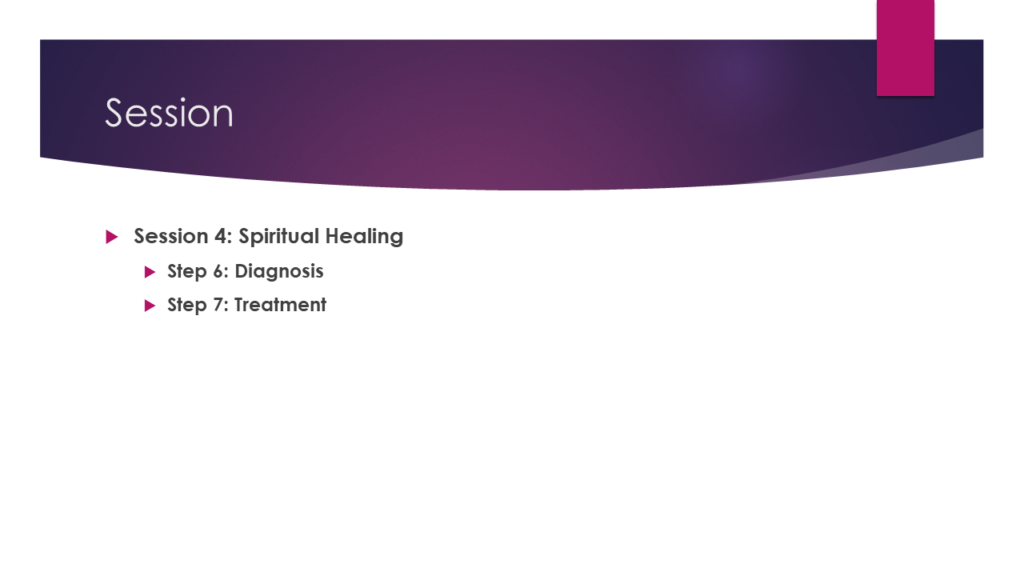
It would be nice if there were only one way to cure the character flaws we talked about in our coverage of the sixth step, but it’s far more complicated than that. There are various kinds of character flaws that derive from several different sources. A few of them can be treated by your becoming aware of them and making deliberate changes in your behavior. Others need outside assistance. Still others respond only to prayer. Think of these character flaws as chronic illnesses that cannot be entirely cured but do yield to treatment. Before we look at the seventh step, it’ll be helpful to understand our character flaws a bit better. We can look at our flaws from three different perspectives.
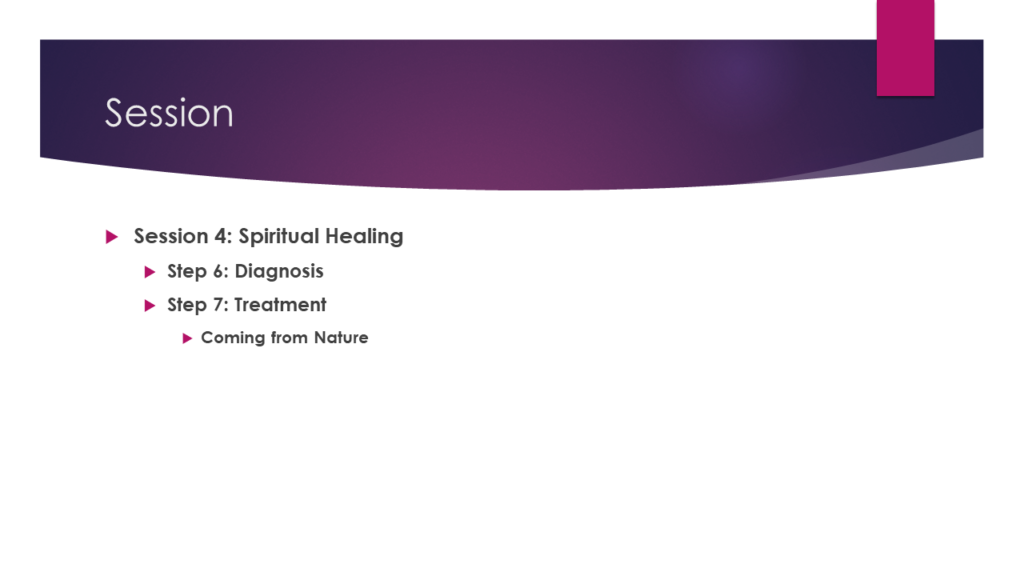
Some of our character flaws derive from nature—that is, our genetic makeup. They derive from innate personality traits that show themselves even in infancy. Babies and young children can tend to be adventurous or timid, tidy or messy, outgoing or withdrawn, affectionate or aloof, easy-going or anxious. These are just the extremes and people often move between the extremes on occasion or over time.
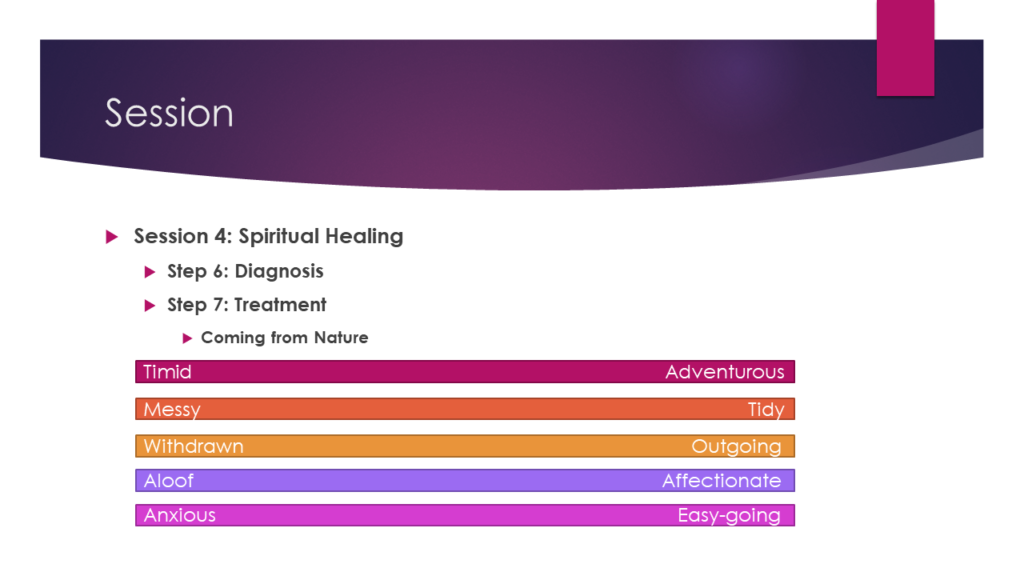
It might be a good idea to take a moment to look at these personality attributes and see where you fall on these five scales. Are there any where you fall at one or the other extreme? You might want to make note of that. Here are some examples of how your personality traits can influence your character flaws. If you are timid, you might also tend to be defensive. If you are very tidy, you might tend to be critical. If you are outgoing, you might tend to be arrogant. If you are aloof, you might tend to be inconsiderate. If you are anxious, you might tend to be impatient. Take a moment to reflect on how your innate traits might influence your character flaws.
Now, let’s put that perspective aside for the moment, and we’ll assume a slightly different perspective on our flaws.
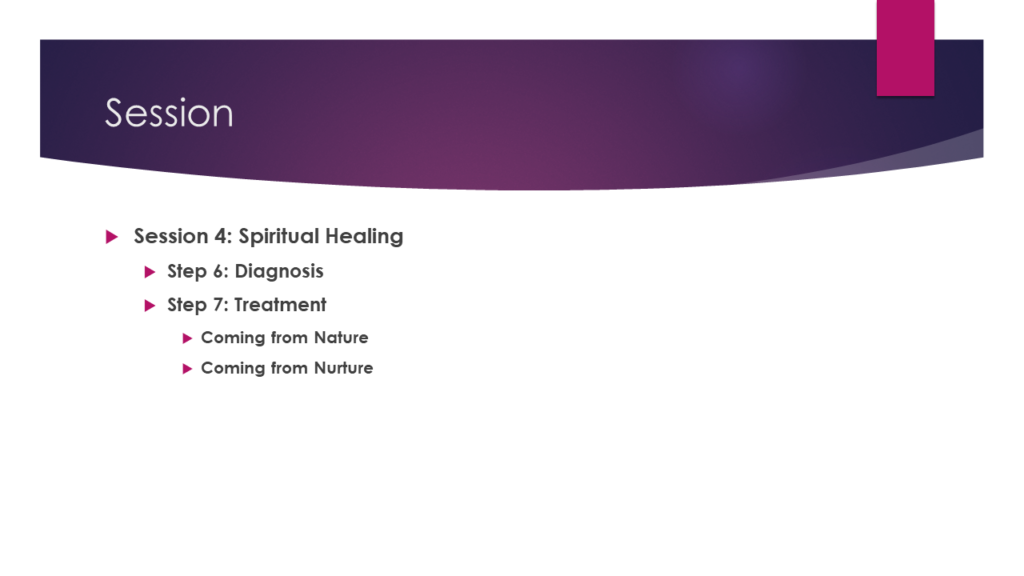
Other flaws are the result of our environment—that is, how we were nurtured. Our environment can be abusive whether it’s from our parenting, schooling, or socioeconomic factors. Extreme poverty or extreme wealth can be abusive. Abuse can be physical, sexual, mental, or emotional. It can come from exploitation, neglect, or abandonment. Not all abuse is obvious. Much abuse can be subtle but chronic, extending over a long period of time. Some signs of abuse are being easily upset or agitated, being withdrawn and uncommunicative, being hyper-critical, ignoring boundaries, being controlling or possessive, being manipulative, and being dismissive of people or of their feelings. It’s important to note that not all abuse is deliberate. In fact, most abuse is unconscious and the result of inappropriate habits of behavior. We can’t blame our environment, no matter how harmful it was, for what it did to us.
Finally, let’s look at a third perspective we can take with regard to our character flaws.
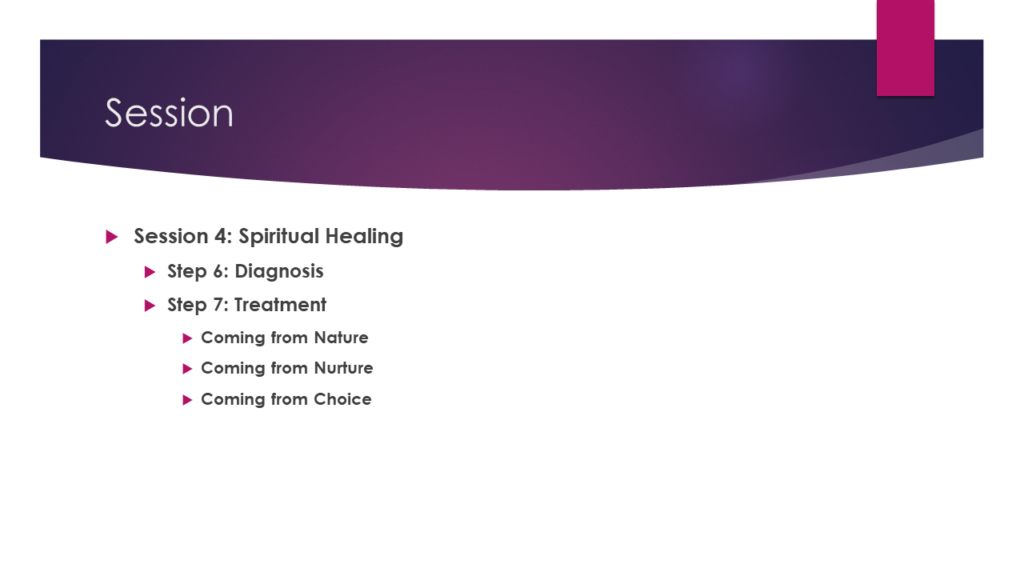
There are some attitudes that we assume by choice because they seem simpler, easier, or produce desired effects. For example, we could be inconsiderate because we’ve judged others to be somehow inferior to us, mentally, emotionally, or in their social status. Racism sexism and homophobia are chosen attitudes and are examples of judgmentalism. Laziness can be a chosen way of life because it seems simpler or easier.
When we’re considering our character flaws, we need to be acutely aware of what’s behind them. Since we’re determined to change our behavior, our flaws need to be addressed. How we address them depends on what they are and where they came from. In some cases—for the flaws that were simply our choices that became habits over time—we can make a decision to behave differently. For the flaws that resulted from environmental factors like bad parenting or abuse, we may need to seek professional help. Often professional help can assist in correcting even those flaws that resulted from our genetic makeup. We need to do our part to address these flaws at their root causes and to change the behaviors that result from them. That being said, we can’t do this alone.
Let’s take another look back at Step 6.
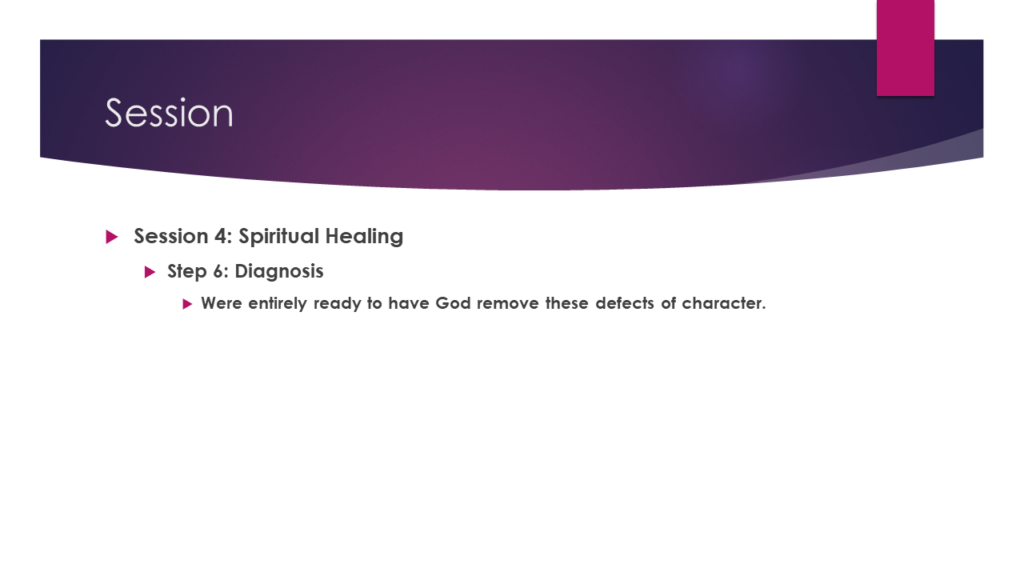
“Were entirely ready to have God remove these defects of character.” Note that this step doesn’t ask us to rely on our own strength of will or intelligence to perform this change of character. As in everything, after taking the third step, we turn our will and our lives over to the care of God. “I can’t; God can; I think I’ll let him.”
Now, let’s take a look at Step 7.
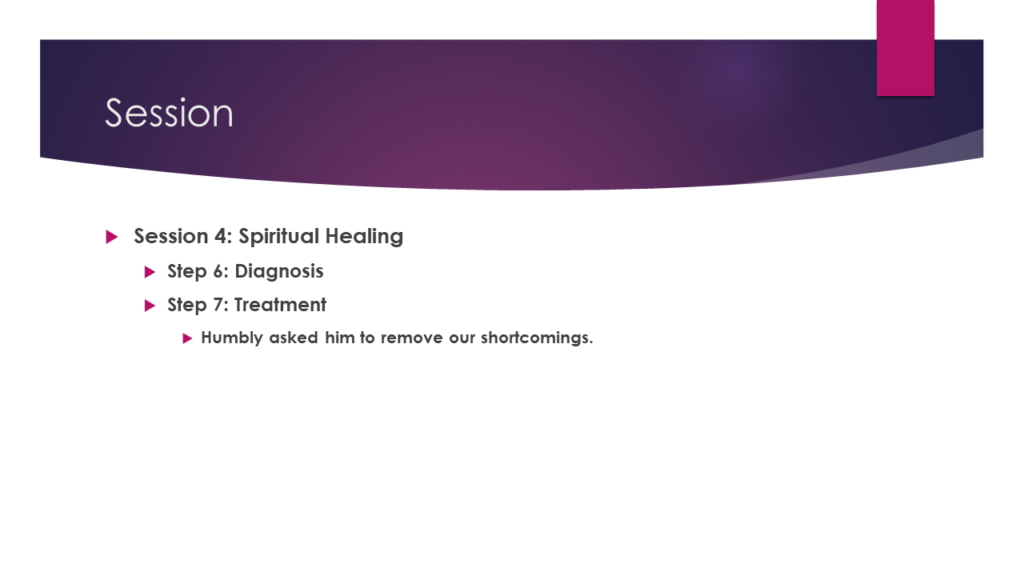
“Humbly asked God to remove our shortcomings.” What we’re going to need to do is to ask God to show us our unvarnished selves. The essence of humility, we said, is to see ourselves through God’s eyes, with all our weaknesses and strengths. Then, we’re going to need to rely on the grace of God to provide us with the wisdom to know what to do with what we’ve discovered about ourselves. We need to comprehend the changes that we’ll need to make in our behavior in order to counteract the flaws in our characters. In every case, we’re going to have to act “as if” the flaws had been removed. We’re going to have to ask ourselves, what’s the next right thing to do? In all humility, how can I be more patient, kind, understanding, and loving in every situation? That’s my part in this. What’s God’s part? The Seventh Step Prayer will guide us in what to seek from God.
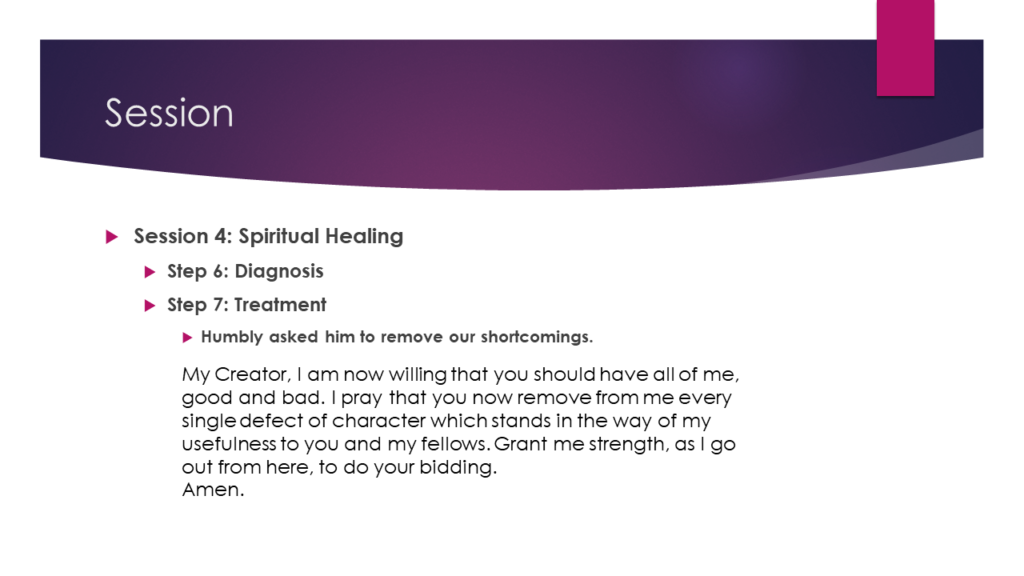
Let’s pray this prayer together. “My Creator, I am now willing that you should have all of me, good and bad. I pray that you now remove from me every single defect of character which stands in the way of my usefulness to you and my fellows. Grant me strength, as I go out from here, to do your bidding. Amen.” The point is that, regardless the source of our flaws, regardless of what means we’ve chosen to address them, we need the humility to ask for help and the trust of God to pray for the strength and guidance to do whatever is necessary to accomplish our goal.
To conclude our session, let’s review where we are in our quest for spiritual growth.

Remember that we defined spirituality as interconnections. Spiritual healing, then, is the process of restoring the interconnections that we were always meant to have. In a very real sense, they are our birthright.

We know that our interconnections are with God and the Universe, with ourselves and with others. These interconnections have been damaged and blocked by what we’ve been calling the spiritual illness. The purpose of these twelve steps is to restore these damaged interconnections.
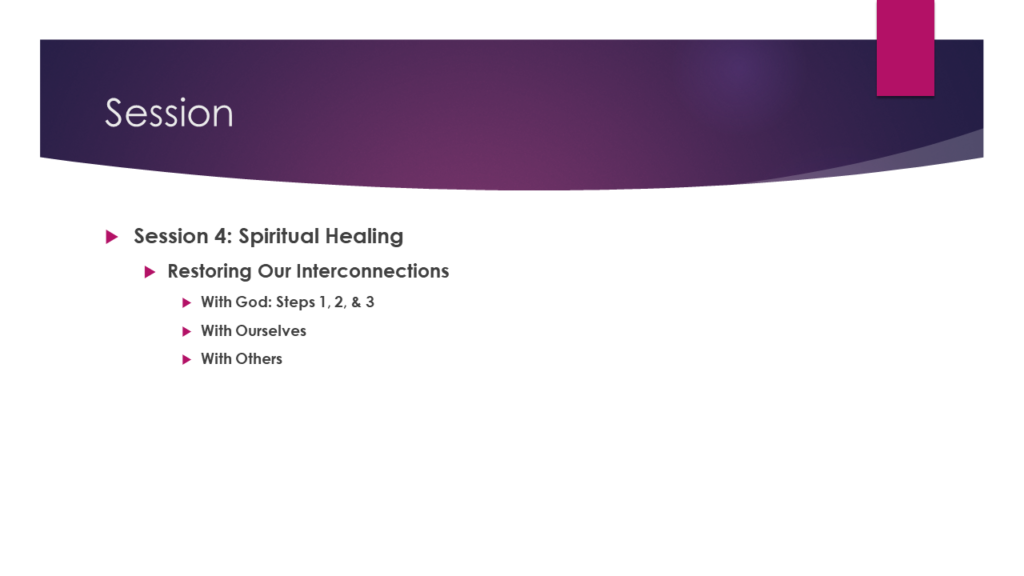
We were able to restore our interconnection with God and the Universe by admitting our powerlessness, by building our faith in a Power greater than ourselves who could restore us to sanity, and by placing our trust in that Power, turning our wills and our lives over to him. These were steps 1, 2, and 3.
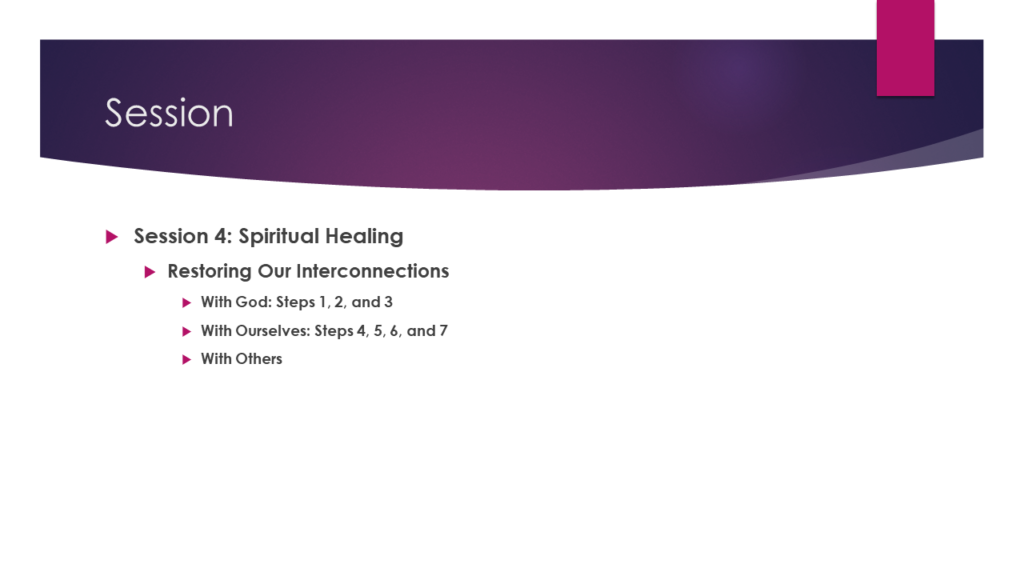
Now, we have just completed the restoration of our interconnection with ourselves, past, present, and future. We did this by taking a fearless and thorough moral inventory and admitting our faults to ourselves, to God, and to another human being, then by examining our character flaws, being entirely ready for God to remove them all, and by asking God to remove them, especially by granting us the wisdom and strength to deal with them effectively. We have but one more interconnection that we need to address to complete our spiritual healing.

In our next session, we’ll use everything we’ve learned so far to reestablish our interconnections with others. Using our Fourth Step Inventories and Analyses, we’ll be able to apply the clarity of mind and heart that we gained in steps six and seven to review our relationships and determine what our next steps should be to make amends wherever possible for the wrongs of our past. When we have completed these two steps, we will possess all the elements necessary for our spiritual growth. All that will be necessary on our part will be to apply the principles we’ve learned on an ongoing daily basis. So, don’t forget to have your Fourth Step Inventory and Analysis sheets with you for our next session.
